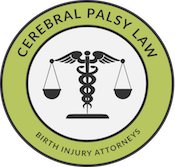What Is Chorioamnionitis?
Chorioamnionitis, also known as intra-amniotic infection, is a maternal health issue in which vaginal bacteria ascend into the uterus and cause placental inflammation. The complication may result in severe maternal, perinatal, and long-term medical consequences. For instance, chorioamnionitis commonly limits oxygen supply (hypoxia) and blood supply (ischemia) to a baby’s brain, which can injure the brain’s motor control centers and leave a newborn with hypoxic ischemic encephalopathy (HIE), lasting brain damage, and cerebral palsy (CP).
Whether your child’s permanent injuries or cerebral palsy (CP) resulted from chorioamnionitis or from another maternal health complication, the experienced lawyers at Michigan Cerebral Palsy Attorneys are here to help. Our legal and medical birth injury team will provide you with a free case review and inform you of your legal options. The birth trauma lawyers at Michigan Cerebral Palsy Attorneys are on-call 24/7 and can be reached in any of the following ways:
Call our offices toll-free at (888) 592-1857
Fill out this online contact form
Click the Live Chat tab to your screen’s left
What Causes Chorioamnionitis?
When infectious organisms travel from the vagina, colon, or cervix to the uterus, important fetal membranes like the umbilical cord and placenta become inflamed and compromise the health of both mother and child. Because the placenta is the source of rich oxygenated blood for the baby, any interferences to its functions may deprive the baby of oxygen and lead to lasting brain damage and cerebral palsy.
What Injuries Are Associated with Chorioamnionitis?
Much of chorioamnionitis’s danger comes from the conditions that lead to oxygen deprivation to the baby. Primarily, hypoxia occurs when placental obstruction limits oxygen to the baby’s brain. The following conditions may cause hypoxia with resultant cerebral palsy.
- Premature rupture of the membranes (PROM): PROM occurs when the membranes of the amniotic sac rupture more than an hour before labor. Chorioamnionitis can cause PROM, which puts the baby at risk for infection and lasting brain injury or cerebral palsy.
- Preterm birth: Chorioamnionitis triggers a maternal and fetal inflammatory response that may release a hormone that causes premature labor. Premature birth puts the baby at risk for respiratory problems, hypoxia, and cerebral palsy.
- Sepsis and meningitis: Sepsis is an illness in which the blood becomes infected by the chorioamnionitic bacteria. Chorioamnionitis may cause meningitis, which is an inflammation of the membranes around the brain and spinal cord. Both sepsis and meningitis may severely injure brain tissue and the cerebrum, causing cerebral palsy.
- Villitis: Left untreated, chronic chorioamnionitis may lead to villitis, a very serious medical condition in which the chorionic villi surface of the placenta (the placental area that is responsible for exchanging fetal gas and nutrients with the mother’s) becomes inflamed. Villitis significantly increases the chances of fetal death.
How Is Chorioamnionitis Diagnosed and Treated?
Maternal fever, uterine tenderness, maternal or fetal tachycardia (rapid pulse), or foul smelling amniotic fluid are considered in the diagnosis of chorioamnionitis. Early diagnosis is vital to avoid the premature rupture of membranes (PROM), placental damage, infection, hypoxia, and cerebral palsy.
When chorioamnionitis is present, many physicians choose to hasten delivery and induce labor or perform C-section operations. In either case, doctors will prescribe supplemental antibiotic regimens to reduce the risk of infection in the baby.
How Is Chorioamnionitis Prevented?
Chorioamnionitis, when not treated promptly and properly, leads to serious neonatal complications. Therefore, it is crucial that physicians closely monitor the risk factors for chorioamnionitis in order to reduce the patient’s chances of developing the condition. The primary preventative measure that physicians take to reduce the risk of chorioamnionitis is the administration of antibiotic regimens for women with preterm premature rupture of membranes (PPROM)—this strategy reduces chances chorioamnionitis by controlling one of its main risk factors.
Legal Help for Chorioamnionitis and Cerebral Palsy
When the risk factors for chorioamnionitis are present, it is crucial that doctors closely monitor the mother and baby and prevent infections using standard medical standards. Failure to diagnose and treat chorioamnionitis immediately is considered medical negligence.
The following scenarios are considered instances of negligence:
- Failure to diagnose and properly treat chorioamnionitis or monitor the mother and baby when the condition is detected
- Failure to diagnose PROM and follow the medical care standards necessary to prevent ascending infection
- Failure to start antibiotics when chorioamnionitis is diagnosed
- Failure to induce labor or order a C-section
- Failure to deliver the baby at an appropriate time; failure to follow care standards when performing a C-section or vaginal delivery or when using delivery assistance tools.
- Failure to obtain informed consent, including advising the patient of the risks and alternative delivery options
If your child has been diagnosed with cerebral palsy or another disability as a result of chorioamnionitis and you believe you medical professionals violated the standard of care in one or more of these ways, call our birth injury legal team. Our Michigan cerebral palsy lawyers will determine if you have grounds for a medical malpractice or personal injury case. You may reach our Michigan birth injury law firm by filling out this online contact form, pressing the Live Chat button to the left, or calling our office toll-free at (888) 592-1857.
Sources:
- Tita, Alan Thevenet N., MD, PhD. “Intraamniotic Infection (chorioamnionitis).” Intraamniotic Infection (chorioamnionitis). Ed. Susan M. Ramin and Vanessa A. Barss. Wolters Kluwer Health, n.d. Web. 16 Sept. 2014.
